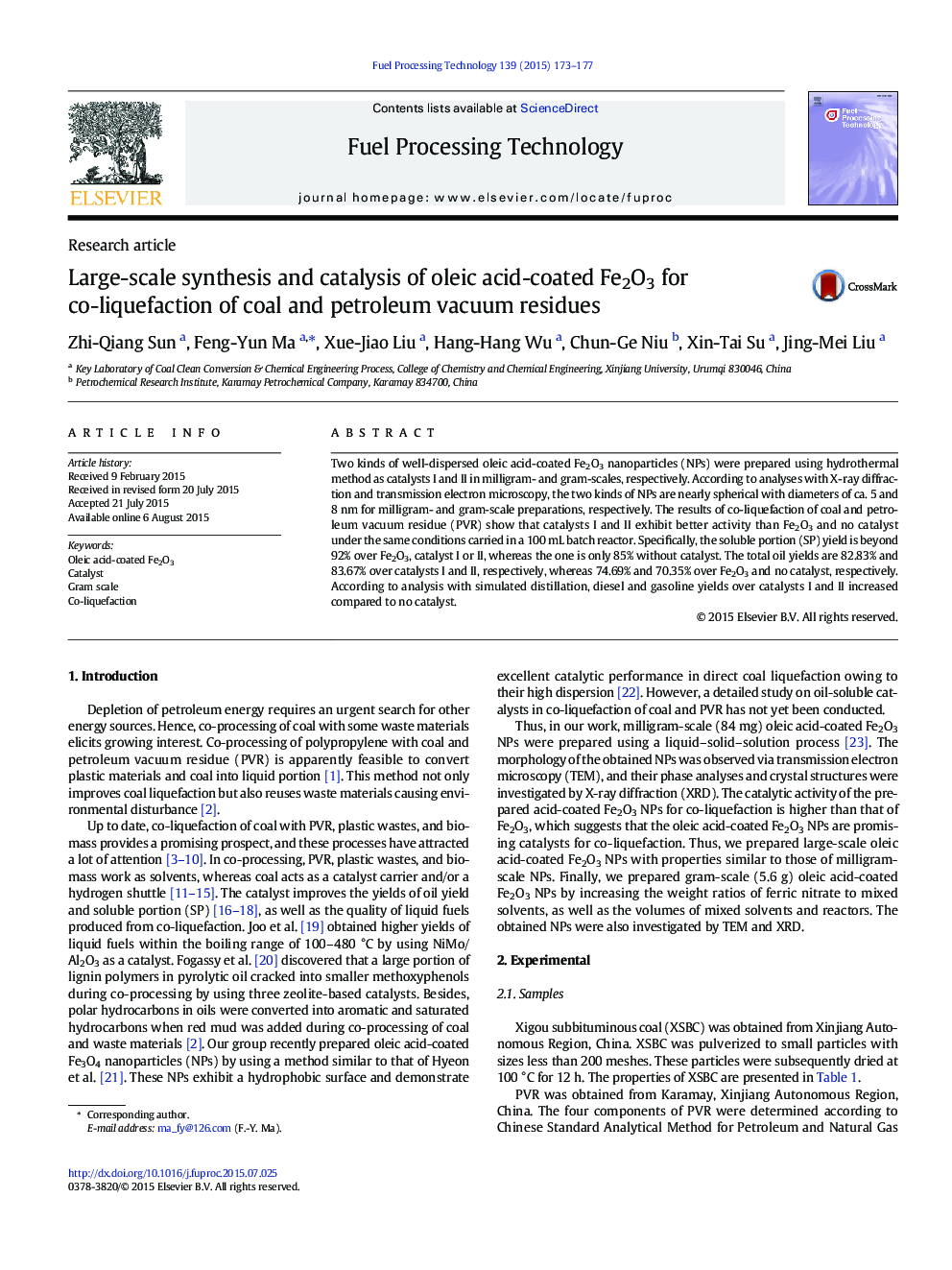| Article ID | Journal | Published Year | Pages | File Type |
|---|---|---|---|---|
| 209443 | Fuel Processing Technology | 2015 | 5 Pages |
•Two kinds of oleic-acid coated Fe2O3 nanoparticles (NPs) were prepared.•The NPs are active for co-liquefaction of a coal and petroleum vacuum residue.•CH4 and C2H6 are the main gaseous hydrocarbons from the co-liquefaction.•The NPs decrease heavy oil yield but increase gasoline and diesel yields.
Two kinds of well-dispersed oleic acid-coated Fe2O3 nanoparticles (NPs) were prepared using hydrothermal method as catalysts I and II in milligram- and gram-scales, respectively. According to analyses with X-ray diffraction and transmission electron microscopy, the two kinds of NPs are nearly spherical with diameters of ca. 5 and 8 nm for milligram- and gram-scale preparations, respectively. The results of co-liquefaction of coal and petroleum vacuum residue (PVR) show that catalysts I and II exhibit better activity than Fe2O3 and no catalyst under the same conditions carried in a 100 mL batch reactor. Specifically, the soluble portion (SP) yield is beyond 92% over Fe2O3, catalyst I or II, whereas the one is only 85% without catalyst. The total oil yields are 82.83% and 83.67% over catalysts I and II, respectively, whereas 74.69% and 70.35% over Fe2O3 and no catalyst, respectively. According to analysis with simulated distillation, diesel and gasoline yields over catalysts I and II increased compared to no catalyst.
Graphical abstractFigure optionsDownload full-size imageDownload as PowerPoint slide
